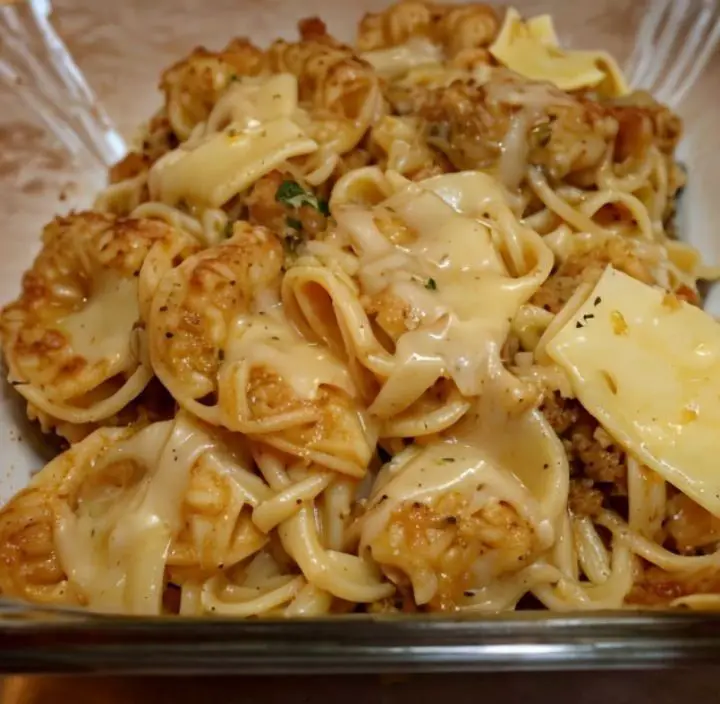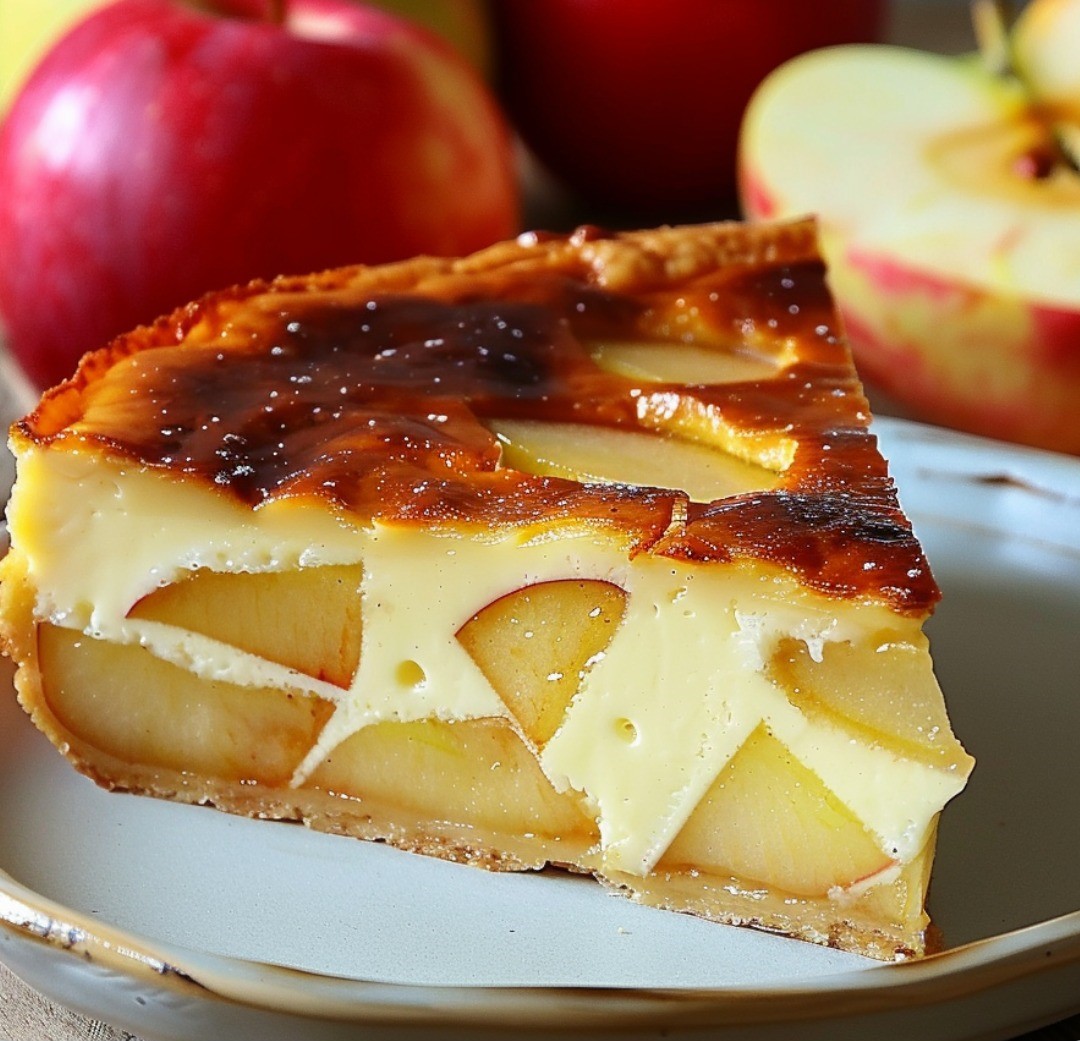The Pennsylvania Dutch cuisine, a unique blend of flavors and traditions, stands as a testament to the rich cultural heritage of the Pennsylvania Dutch community. This culinary tradition, deeply rooted in the fertile lands of Pennsylvania, showcases a variety of dishes that are both hearty and comforting. Among these, Bridled Noodles emerge as a beloved classic, embodying the simplicity and warmth of home cooking.
Originating from the German immigrants known as the Pennsylvania Dutch, this cuisine has evolved over centuries, integrating local ingredients and adapting to the American palate. The hallmark of this culinary tradition lies in its emphasis on farm-fresh produce, meats, and dairy, reflecting the community’s agrarian lifestyle. Bridled Noodles, in particular, highlight this approach, combining simple ingredients like wide egg noodles, butter, and breadcrumbs to create a dish that is both nourishing and satisfying.
The appeal of Pennsylvania Dutch cuisine, and Bridled Noodles specifically, extends beyond the borders of Pennsylvania, captivating food enthusiasts nationwide. These dishes offer a glimpse into a way of life that values community, simplicity, and the joys of sharing a meal. For those interested in exploring this culinary tradition further, a deep dive into Pennsylvania Dutch Cuisine provides a comprehensive overview of its history, key dishes, and cooking techniques. Additionally, for culinary adventurers looking to expand their recipe collection, Pinterest offers a wealth of Pennsylvania Dutch recipes, including variations of Bridled Noodles that cater to modern tastes and dietary preferences.
In the following sections, we will delve into the history and cultural significance of Bridled Noodles, offering insights into how this dish has become a cherished part of Pennsylvania Dutch culinary heritage. Through this exploration, readers will gain an appreciation for the simplicity and depth of flavors that define this beloved cuisine.
History and Origin of Bridled Noodles
The story of Bridled Noodles is deeply intertwined with the history of the Pennsylvania Dutch, a community whose culinary traditions have been shaped by their German heritage and the agricultural landscape of Pennsylvania. This dish, with its humble beginnings, reflects the community’s ethos of making do with what is available, turning simple ingredients into a comforting and satisfying meal.
The term “bridled” in Bridled Noodles is believed to have originated from the method of layering noodles and breadcrumbs, akin to the layers of a bridle on a horse. This layering technique not only adds texture to the dish but also ensures that the flavors are evenly distributed, creating a harmonious blend of the buttery noodles and the crispy breadcrumbs. The addition of onion or garlic powder, along with a generous serving of gravy, further enhances the dish, making it a staple at gatherings and holiday meals.
Historically, Bridled Noodles were a practical solution to the need for hearty, filling meals that could feed large families and gatherings without requiring expensive ingredients. The Pennsylvania Dutch, known for their frugality and resourcefulness, excelled at creating dishes that were both economical and flavorful. This approach to cooking not only reflects their values but also their ability to adapt to the new world while preserving the essence of their culinary heritage.
The evolution of Bridled Noodles over the years has seen various adaptations, incorporating local ingredients and catering to changing dietary preferences. However, the core elements of the dish have remained unchanged, serving as a culinary bridge to the past. For those interested in the broader context of traditional American dishes, a visit to Wikipedia’s page on Traditional American Dishes offers insights into how dishes like Bridled Noodles fit into the tapestry of American cuisine.
Moreover, the resurgence of interest in historical recipes and traditional cooking methods has led to a renewed appreciation for Bridled Noodles. Platforms like Pinterest have become valuable resources for those looking to explore the rich diversity of Pennsylvania Dutch recipes, including modern takes on Bridled Noodles that respect the dish’s origins while embracing contemporary tastes.
Cultural Significance
The cultural significance of Bridled Noodles within the Pennsylvania Dutch community extends far beyond its role as a mere side dish. It embodies the principles of simplicity, resourcefulness, and communal dining that are central to Pennsylvania Dutch culture. This dish, often served during holidays, family gatherings, and church potlucks, acts as a medium for passing down traditions and fostering a sense of belonging among community members.
Bridled Noodles, with their comforting texture and rich, buttery flavor, are reminiscent of the Pennsylvania Dutch ethos of “make do and mend.” This philosophy, which emphasizes making the most of available resources, is reflected in the dish’s simple yet satisfying ingredients. The act of preparing and sharing Bridled Noodles is a communal affair, reinforcing the bonds of family and community. It is a testament to the Pennsylvania Dutch’s ability to create a sense of home and warmth through their culinary practices.
Moreover, the dish’s popularity beyond the Pennsylvania Dutch community highlights its broader appeal as a symbol of American comfort food. Its inclusion in Thanksgiving dinners and other celebratory occasions across the United States speaks to its versatility and the universal appeal of dishes that evoke a sense of nostalgia and home.
The cultural significance of Bridled Noodles also lies in its ability to adapt over time while maintaining its core identity. Modern variations of the dish, which incorporate gluten-free noodles or vegetarian gravy, reflect changing dietary trends and the inclusivity of Pennsylvania Dutch cuisine. This adaptability ensures that Bridled Noodles continue to be relevant and cherished by new generations.
For those interested in exploring the culinary traditions of the Pennsylvania Dutch further, resources like Wikipedia’s article on Pennsylvania Dutch Cuisine offer valuable insights. Additionally, for culinary enthusiasts looking to expand their repertoire, Pinterest’s collection of noodle recipes provides a plethora of ideas, showcasing the versatility of noodles in global cuisine.
In conclusion, Bridled Noodles are more than just a dish; they are a celebration of cultural heritage, community, and the simple pleasures of sharing a meal. As we move on to explore the traditional recipe and its variations, it’s clear that Bridled Noodles hold a special place in the hearts of those who cherish the traditions of the Pennsylvania Dutch and the broader tapestry of American culinary culture.
Traditional Bridled Noodles Recipe
The traditional recipe for Bridled Noodles is a testament to the Pennsylvania Dutch philosophy of simplicity and resourcefulness in cooking. This dish, with its comforting flavors and textures, is surprisingly straightforward to prepare, requiring only a few basic ingredients. Here’s how to make Bridled Noodles, a dish that has warmed the hearts and homes of many.
Ingredients:
- 1 package wide egg noodles (16 oz)
- 1 1/2 cups Italian bread crumbs
- 1 3/4 sticks butter, divided
- 1 1/2 tsp onion or garlic powder
- Salt and pepper, to taste
- Chicken or turkey gravy, canned or homemade
Step-by-step Instructions:
- Preparation of Noodles: Begin by boiling the wide egg noodles according to the package instructions. Once cooked, drain the noodles but do not rinse them. This helps the noodles absorb the flavors more effectively.
- Adding Butter: While the noodles are still hot, add 3/4 stick of butter, carefully stirring until the butter is fully melted. This step is crucial for giving the noodles their signature buttery taste. Season with salt and pepper according to your preference.
- Breadcrumb Mixture: In a separate bowl, melt the remaining stick of butter. Combine this melted butter with the Italian bread crumbs and onion or garlic powder, blending until the crumbs are evenly coated. This mixture adds a delightful crunch and flavor to the dish.
- Layering: Preheat your oven to 350 degrees F. Spray a 3-quart casserole dish with nonstick cooking spray. Place a layer of the buttered noodles at the bottom of the dish, followed by a layer of the breadcrumb mixture. Repeat this process until all the noodles and breadcrumbs are used, finishing with a layer of breadcrumbs on top.
- Baking: Cover the casserole dish and bake for approximately 35-45 minutes, or until the dish is heated through. For a crispy finish, uncover and place under the broiler for the last 3-4 minutes of cooking.
- Serving: Serve the Bridled Noodles hot, accompanied by a ladle of chicken or turkey gravy. The gravy not only adds moisture but also complements the flavors of the butter and breadcrumbs, making for a truly comforting dish.
This traditional Bridled Noodles recipe captures the essence of Pennsylvania Dutch cooking, offering a dish that is both satisfying and simple to prepare. Whether served as a side dish during the holidays or enjoyed as a main course, Bridled Noodles are sure to delight.
Variations of the Recipe
The beauty of Bridled Noodles lies in their versatility. While the traditional recipe is beloved for its simplicity and comforting flavors, there are numerous variations that cater to different tastes and dietary requirements. Here are some creative twists on the classic Pennsylvania Dutch dish that maintain its heartwarming essence while introducing new flavors and textures.
Vegetarian Options:
- Mushroom Gravy Bridled Noodles: Replace the chicken or turkey gravy with a rich, savory mushroom gravy. This not only makes the dish vegetarian-friendly but also adds a deep, earthy flavor that complements the buttery breadcrumbs and noodles.
- Cheesy Bridled Noodles: Add a layer of shredded cheese between the noodles and breadcrumbs before baking. The cheese melts during baking, creating a gooey, delicious layer that makes the dish even more comforting.
Modern Twists:
- Spicy Bridled Noodles: For those who enjoy a bit of heat, adding a teaspoon of red pepper flakes to the breadcrumb mixture can provide a spicy kick that balances the dish’s richness.
- Herb-Infused Bridled Noodles: Incorporate fresh herbs such as parsley, thyme, or rosemary into the breadcrumb mixture. This not only adds a burst of freshness but also elevates the dish with aromatic flavors.
Gluten-Free Adaptation:
- Gluten-Free Bridled Noodles: Substitute the wide egg noodles with a gluten-free alternative and use gluten-free breadcrumbs. This adaptation ensures that those with gluten sensitivities can still enjoy the comforting flavors of Bridled Noodles without compromise.
Each variation of Bridled Noodles offers a unique take on the traditional recipe, allowing individuals to customize the dish according to their preferences and dietary needs. Whether opting for a vegetarian version, adding a modern twist, or adapting the recipe for gluten-free diets, these variations ensure that Bridled Noodles remain a versatile and inclusive dish that continues to bring people together.
Cooking Tips and Techniques
Mastering the art of making Bridled Noodles involves more than just following a recipe; it’s about embracing the cooking techniques and tips that elevate this simple dish into a memorable meal. Here are some expert tips to ensure your Bridled Noodles are perfect every time.
- Noodle Preparation: To prevent the noodles from becoming too soft and mushy, cook them until they are just al dente. This ensures they retain a slight bite, which adds texture to the dish.
- Butter Distribution: Evenly distributing the butter among the noodles is key. Ensure the noodles are well-coated with butter before adding the breadcrumbs. This not only enhances flavor but also helps the breadcrumbs adhere to the noodles.
- Breadcrumb Toasting: For an extra crunch, lightly toast the breadcrumbs in a skillet with a bit of butter before adding them to the noodles. This step deepens the flavor and adds a golden color to the breadcrumbs.
- Layering Technique: When layering the noodles and breadcrumbs, press down gently on each layer. This compacting helps the layers meld together during baking, creating a cohesive dish.
- Broiling: Keep a close eye on the dish during the broiling phase to prevent the breadcrumbs from burning. A golden, crispy top is what you’re aiming for, which adds a delightful contrast to the soft noodles beneath.
Serving Suggestions
Bridled Noodles are incredibly versatile, making them an excellent side dish for a variety of main courses. Here are some serving suggestions to complement your Bridled Noodles:
- Roasted Meats: Serve alongside roasted turkey, chicken, or pork. The savory flavors of the meat pair beautifully with the buttery, crispy noodles.
- Vegetarian Entrees: For a vegetarian meal, pair with a hearty vegetable stew or roasted vegetables. The richness of the noodles complements the earthiness of the vegetables.
- Salads: A fresh, crisp salad can balance the richness of the Bridled Noodles, adding a refreshing element to your meal.
Pairing with Other Dishes
Bridled Noodles can also be part of a larger feast, especially during holidays and family gatherings. Consider these pairings to create a well-rounded meal:
- Appetizers: Start with a light soup or salad to prepare the palate for the comforting richness of the Bridled Noodles.
- Desserts: Conclude the meal with a simple, homemade dessert such as apple pie or a fruit crumble, echoing the Pennsylvania Dutch tradition of ending on a sweet note.
By following these cooking tips and considering these serving and pairing suggestions, you can elevate your Bridled Noodles from a simple side dish to the star of any meal. Whether you’re cooking for a special occasion or a weeknight dinner, these insights will help you bring a touch of Pennsylvania Dutch warmth to your table.
FAQs
What are Bridled Noodles?
Bridled Noodles are a cherished dish within the Pennsylvania Dutch cuisine, known for their comforting blend of buttery egg noodles and crispy breadcrumbs. This dish, often layered and baked to golden perfection, serves as a versatile side that complements a variety of main courses. Its simplicity, coupled with its rich flavor profile, makes it a favorite among those who appreciate the warmth of home-cooked meals.
Can Bridled Noodles be made in advance?
Yes, Bridled Noodles can be prepared in advance, making them a convenient option for gatherings and holiday meals. To do so, assemble the dish up to the point of baking, then cover and refrigerate. When ready to serve, bake as directed, adding a few extra minutes to the cooking time if coming straight from the refrigerator. This make-ahead approach ensures the dish retains its flavor and texture, allowing you to enjoy more time with your guests.
Are there gluten-free options for Bridled Noodles?
Absolutely, Bridled Noodles can be adapted to suit a gluten-free diet without compromising on taste or texture. Substitute the traditional egg noodles with a gluten-free variety and use gluten-free breadcrumbs for the topping. These simple swaps allow everyone to enjoy the comforting flavors of this classic dish, regardless of dietary restrictions.
Print
Pennsylvania Dutch Bridled Noodles
- Author: Naomi
- Total Time: 50 minutes
- Yield: 8 servings 1x
Description
Bridled Noodles, a quintessential Pennsylvania Dutch dish, is the epitome of comfort food. This recipe brings together the simple yet satisfying flavors of buttery egg noodles and crispy breadcrumbs, baked to perfection.
Ingredients
- 1 package wide egg noodles (16 oz)
- 1 1/2 cups Italian bread crumbs
- 1 3/4 sticks butter, divided
- 1 1/2 tsp onion or garlic powder
- Salt and pepper, to taste
- Chicken or turkey gravy, canned or homemade
Instructions
- Preparation of Noodles: Boil the wide egg noodles according to the package instructions until al dente. Drain but do not rinse to maintain their starchiness.
- Adding Butter: While the noodles are still hot, stir in 3/4 stick of melted butter until evenly coated. Season with salt and pepper to taste.
- Breadcrumb Mixture: Melt the remaining stick of butter and mix it with the Italian bread crumbs and onion or garlic powder, ensuring the crumbs are thoroughly coated for maximum flavor.
- Layering: Preheat your oven to 350 degrees F. In a 3-quart casserole dish sprayed with nonstick cooking spray, layer one-third of the buttered noodles, followed by one-third of the breadcrumb mixture. Repeat this process until all ingredients are used, ending with a breadcrumb layer on top.
- Baking: Cover the dish with foil and bake for 35-45 minutes, or until the dish is heated through and the flavors have melded together. For a crispy finish, remove the foil and broil for the last 3-4 minutes.
- Serving: Serve the Bridled Noodles warm, with gravy on the side or drizzled on top, according to preference.
Notes
- Make-Ahead Tip: Assemble the dish up to a day in advance and refrigerate. Add a few extra minutes to the baking time if baking straight from the refrigerator.
- Variations: Feel free to experiment with the recipe by adding cheese between layers for a cheesy twist or substituting the breadcrumbs with gluten-free alternatives for a gluten-free version.
- Storage: Leftovers can be stored in an airtight container in the refrigerator for up to 3 days and reheated in the oven or microwave.
- Serving Suggestion: Bridled Noodles pair beautifully with roasted meats, making them a perfect side for holiday dinners or a comforting main dish for vegetarian options with a hearty vegetable gravy.
- Prep Time: 15 minutes
- Cook Time: 35 minutes
- Category: Chicken
- Cuisine: American
Nutrition
- Calories: 320 kcal (approx.)










